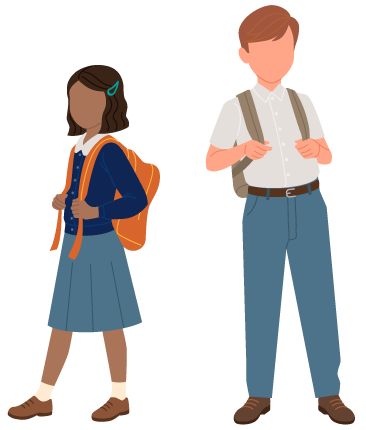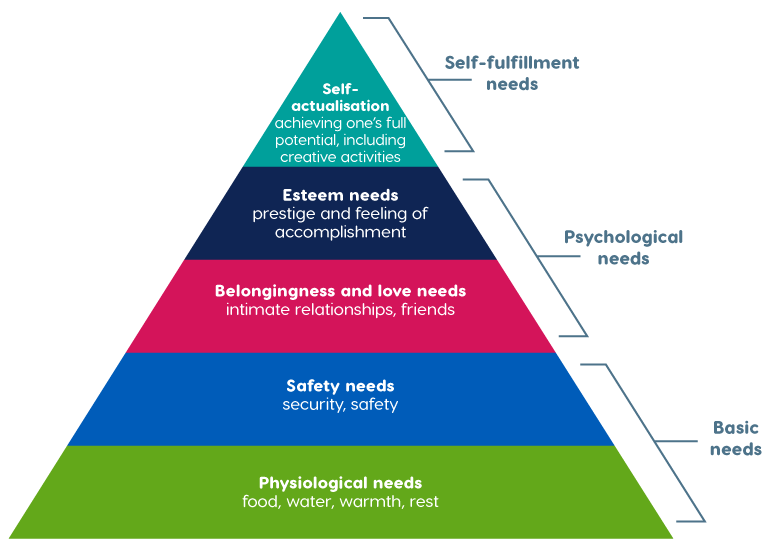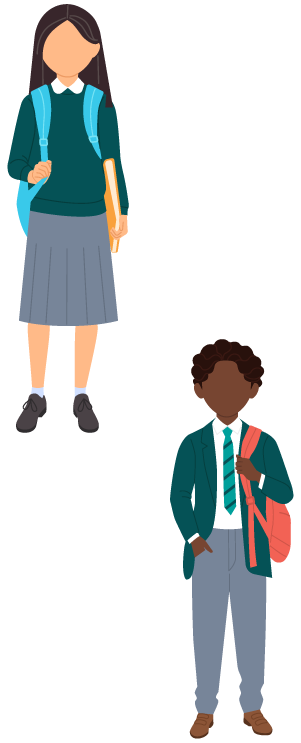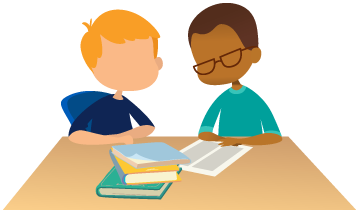Practical support for identifying and meeting need
Cognition and learning
What are cognition and learning needs?
We all process and interpret information differently to varying degrees. In our classrooms, some children and young people can find elements of teaching and learning challenging. This can be for a wide variety of reasons and the learning needs children and young people present with can be broad ranging.
Terms such as dyslexia, dyscalculia, moderate learning difficulties, severe learning difficulties and even learning disabilities may be used to explain the learning need of an individual. However, ultimately, to support a child or young person we must consider how they are presenting, and how we can support them to develop their skills and understanding.
It is important that the learning needs of a child or young person are considered in a wider context. There are many reasons that an individual may be finding learning difficult.
Click to expand
The hierarchy of needs
In his hierarchy of need, Maslow suggests that to be able to grow and develop as human beings we must have a number of needs met; this begins with our physiological and safety needs.
Put simply, it is difficult for a child or young person to learn if they are tired, hungry, physically uncomfortable or pre-occupied with upsetting thoughts or feelings.
The learning environment
As well as considering these needs it can be helpful to consider the general classroom strategies that are in place that can support all elements of learning.
Busy classrooms can impact on an individual’s ability to concentrate for a variety of reasons; they may find the noise too distracting; it may be visually over-stimulating, or it may be distractible.
In addition, some children may benefit from sitting in particularly places in the classroom to limit their distractibility or the sensory inputs that they have to manage.
Consider the type of environment you concentrate best in – what would it be like? Have you completed a sensory audit of your classroom?
Understanding individual learning needs
Some questions to ask if you are concerned about a child’s learning
Some detective work may be required to fully understand the child or young person’s learning needs and the best way to support them.
Key questions to ask are:
Does the child/young person have any hearing difficulties?
Are there signs that they are missing some of what is said or that they are struggling with hearing the difference between words or sounds?
If yes…
…try talking to the parents/carers or schools nurse about arranging a hearing test.
Does the child/young person have any visual difficulties?
Are there signs that they struggling with deciphering numbers, words and/or letters – either on the board or close up? Are they complaining about things being difficult to see or words moving around?
If yes…
…ask parents/carers to arrange a sight test. If required, this may involve a trip to the ophthalmologist who can assess for coloured overlays. A leaflet with additional information is available from the Specialist Inclusion Team.
Does the child/young person have any communication needs?
Speech and language needs
If a child or young person is struggling with aspects of oral language, this can have implications across the curriculum. Written language can be particularly affected because it is difficult to spell a word you cannot say or make sense of a written account that contains lots of vocabulary you do not know.
For more information, see the speech and language pages >
Social communication needs
Children and young people with social communication needs can find school a rather confusing and stressful place to be. It is worth considering the impact of this on their learning.
For more information, see the social communication pages >
Does the child or young person have any physical or sensory needs?
Some children or young people may need support with the physical aspects of learning. They may require additional help to organise themselves physically to complete tasks.
For more information, see the section on supporting physical skills >
Alternatively, they may have some underlying health or medical condition that impacts on their concentration and mood.
For more information, see the section on health needs >
Sensory needs are also an important consideration: if a child or young person finds their environment overwhelming, or they quickly start to feel uncomfortable if they have to sit still for more than a few minutes, they may not be in the right state of mind to learn.
For more information, see the sensory needs section >
How motivated is the child or young person to learn?
Does the child or young person understand the value of what they are being asked to learn or do? If not, can this be communicated, or could you use their other interests to increase their motivation?
Does the child or young person lack confidence and self-belief?
It is easy for children and young people’s confidence in themselves as a learner to get chipped way if they regularly find that they struggle with tasks that others seem to find easy.
Consider what could be put in place to help the child or young person feel more positive about their own abilities.
Does the young person feel exposed by the difficulties they experience?
A young person may feel that their difficulties are a sign of failure that makes them feel exposed and vulnerable. This emotional experience may make them wish to avoid activities they expect to be hard.
They need to feel safe and secure with the individuals around them when they do engage.
Does the child/young person have the skills to do what is being asked of them?
Consider the skills that are necessary to successfully complete the task. Are your expectations of them reasonable given their skill set and developmental level?
What opportunities do they have to practice their skills?
Has the child or young person had any gaps in schooling, e.g. periods of ill health? To what extent has the child or young person’s family being able to provide support at home?
Does the ability to concentrate impact on their learning?
Some children and young people find it particularly challenging to manage their own concentration and to maintain a focus long enough to master a new skill.
For ideas on how to support children and young people with this, see the concentration and impulsivity needs section >
Does memory affect their ability to make progress?
Some children and young people can find it hard to retain information or retain information whilst also manipulating it. In addition, this can make it hard to generalise learning from one situation to another.
Are home factors impacting on school?
All families go through ups and downs. It is worth considering the impact of home life, particularly if there is a change in how the child or young person is presenting.
Building a picture of need
To consider the support that may be appropriate for the child or young person you are working with; it is important to build up a picture of their strengths and needs. This can/should be approached through:
Conversations with family, staff and the child or young person
Forging positive relations with parents/carers can help to develop trust and allow for a holistic approach to be taken. It is also good to check with parents/carers whether there are any issues at home that might be affecting the child or young person at school.
Explore whether similar needs are shown across contexts.
- Do the parents/carers have concerns?
- What supports the child/young person at home with any needs they may present with?
For more information on working with parents/carers, see the partnership working section >
Checking on their general health
Depending on what you are worried about, you may want to check whether the child or young person has had a hearing or vision check and whether there are any health concerns.
Parents/carers are usually able to help with this, but the school nurse> is also a useful point of contact.
Baseline assessments and evidence gathering
Explore the persistency of the need, carry out assessments to provide you with a baseline to work from that is appropriate for the individual.
Are the child or young person’s needs specific to certain skills or areas of the curriculum, e.g. literacy?
Observations
By the class teacher, SENDCo or literacy/mathematics co-ordinators.
See Supporting SEND-Observing Learners > (nasen.org.uk website)
Assess, Plan, Do, Review
Monitoring and reviewing input, use of provision mapping, use of IEPs/SEN support plans, etc, based on level of need.
See SEN Support and the graduated approach: Inclusive practice > (nasen.org.uk website)
Engagement model
Use this approach to assess and monitor the learning needs of individuals who are working below the level of the national curriculum and not engaged in subject specific study.
Diagnosis and labels
There are many diagnostic labels and terms which may be used to describe an individual’s learning needs. These include but are not limited to:
- Learning/intellectual disabilities
- Profound learning difficulties
- Moderate learning difficulties
- Dyslexia
- Dyscalculia
- Specific learning needs
Some of these diagnosis use a strict criteria for identification whilst others may have a range of descriptive factors and are less static. Regardless of a diagnosis that a child or young person may or may not have, it is important that we consider the needs that they present with and plan intervention and support accordingly.
Links to resources and downloads
Understanding working memory: a classroom guide
Professor Susan E. Gathercole & Dr Tracy Packiam Alloway
PDF
Putting evidence to work: a school’s guide to implementation
Gathering and interpreting data to identify priorities
PDF






